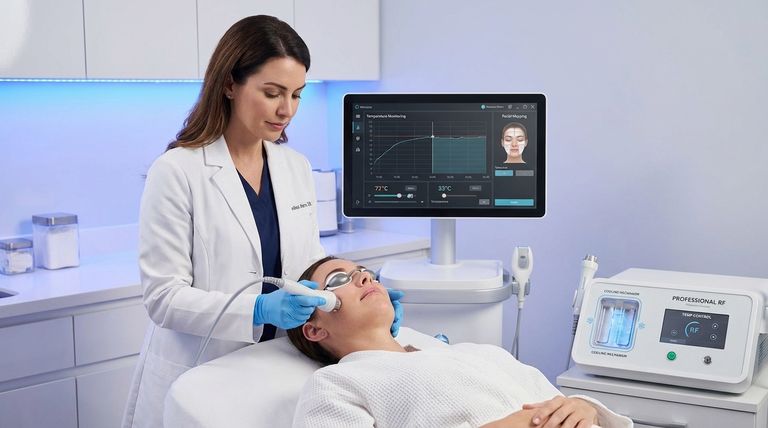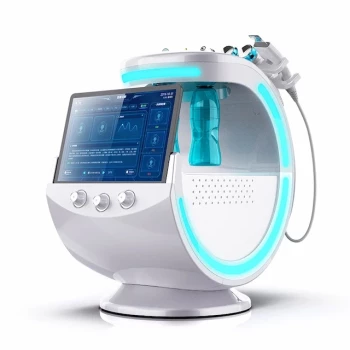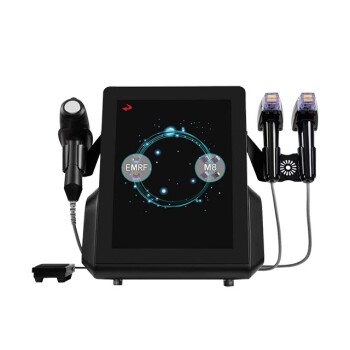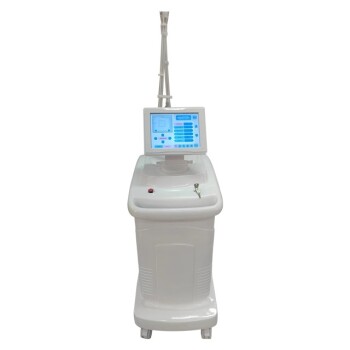Yes, while radio frequency (RF) skin tightening can be dangerous, its safety is overwhelmingly dependent on the skill of the practitioner and the quality of the equipment used. When performed incorrectly or with excessive energy, the primary risk is a thermal burn to the skin. Other potential side effects include temporary redness and, in some cases, dark spots, also known as post-inflammatory hyperpigmentation.
The safety of RF skin tightening is not inherent to the technology itself, but to its application. The greatest risks do not come from the radio frequency energy, but from practitioner error, improper settings, or the use of substandard devices.

How RF Works and Where Risks Emerge
To understand the risks, you must first understand the mechanism. RF skin tightening is not a passive treatment; it works by inducing a controlled injury to stimulate a healing response.
The Principle of Controlled Thermal Injury
RF devices deliver focused energy into the deeper layers of your skin, the dermis. This energy generates precise, targeted heat.
This controlled heating causes two things to happen: existing collagen fibers contract, creating an immediate tightening effect, and it stimulates the production of new collagen and elastin over time.
The Source of Risk: Uncontrolled Heating
The primary danger, a burn, occurs when this process becomes uncontrolled. This is almost always the result of "overexposure," where too much energy is delivered too quickly or is concentrated in one spot.
An unskilled operator may use a setting that is too high for your skin type or fail to keep the device moving properly, allowing heat to build up to a damaging level.
Common, Temporary Side Effects
Immediately following a procedure, some redness and minor swelling are normal and expected. This is part of the desired inflammatory response that signals your body to begin the healing and collagen-rebuilding process.
These effects are typically mild and should subside within a few hours to a day. They are signs the treatment is working, not necessarily a complication.
Less Common but More Serious Risks
Beyond temporary redness, more significant risks can occur. Dark spots (post-inflammatory hyperpigmentation) can develop, particularly in individuals with darker skin tones, if the thermal energy is too aggressive and overstimulates melanin-producing cells.
In the most severe cases of operator error, deep burns can lead to blistering, pain, and permanent scarring.
Understanding the Key Factors in Safety
The difference between a safe, effective treatment and a dangerous complication is rarely the technology itself. It is almost always determined by external factors you can screen for.
The Practitioner's Expertise is Paramount
The single most important safety factor is the person performing your treatment. A certified and experienced professional understands the complex relationship between energy levels, duration, skin thickness, and skin type.
They know how to monitor your skin's response in real-time, recognize the signs of excessive heating, and adjust their technique immediately to prevent injury.
The Quality of the RF Device
Professional-grade, medical RF devices are engineered with advanced safety features. These often include real-time temperature sensors and cooling mechanisms to protect the outer layer of skin (the epidermis) while heating the deeper dermis.
Less expensive or unregulated devices, especially those intended for at-home use, often lack these critical safety controls, dramatically increasing the risk of uneven heating and burns.
How to Ensure a Safe Procedure
Your role in ensuring safety involves diligent research before you ever commit to a treatment.
- If your primary focus is safety: Prioritize vetting the practitioner's credentials, training, and direct experience with the specific RF device they use.
- If your primary focus is achieving results: Understand that a safe procedure is an effective one; overly aggressive treatments lead to complications and scarring, not superior results.
- If you are considering an at-home device: Acknowledge the significantly higher risk you are assuming due to the absence of professional oversight and sophisticated safety mechanisms.
By focusing your diligence on the provider, not just the procedure, you can confidently leverage the benefits of RF technology while minimizing its inherent risks.
Summary Table:
| Risk Factor | Key Insight | How to Mitigate |
|---|---|---|
| Practitioner Error | The leading cause of complications like burns. | Choose a certified, experienced professional. |
| Device Quality | Substandard equipment lacks safety controls. | Insist on professional-grade, medical RF devices. |
| Common Side Effects | Temporary redness and swelling are normal. | These typically subside within hours to a day. |
| Serious Complications | Can include hyperpigmentation or scarring. | Proper technique and skin-type assessment are critical. |
Invest in Safety and Superior Results with BELIS
Choosing the right equipment is your first step toward ensuring client safety and achieving outstanding outcomes. BELIS specializes in professional medical aesthetic equipment, providing medical aesthetics clinics and premium beauty salons with advanced, reliable RF devices engineered with critical safety features like real-time temperature monitoring.
By partnering with BELIS, you equip your practice with technology that minimizes risks while maximizing treatment efficacy. Enhance your service offerings and build client trust with equipment you can depend on.
Contact BELIS today to learn more about our professional RF solutions and how we can support your business growth.
Visual Guide

Related Products
- IPL SHR+Radio frecuency machine
- Ultrasonic Cavitation Radiofrecuency Machine for Body Slimming
- 4D 12D HIFU Machine Device for Skin Tightening and Lifting
- RF Microneedling Machine Micro Needle Radio Frequency Machine
- Cryolipolysis Fat Freezing Machine and Ultrasonic Cavitation Device
People Also Ask
- What does radiofrequency do to your body? Understanding Thermal Effects for Safe Treatments
- Does IPL hair removal have other benefits? Discover the Skin Rejuvenation Perks
- How does SHR hair removal work? A Gentle, In-Motion Technology for Permanent Results
- Is it safe to use an RF machine at home? How to Use Consumer Devices Safely
- Is it safe to use RF machine everyday? Avoid These Risks for Optimal Results



















